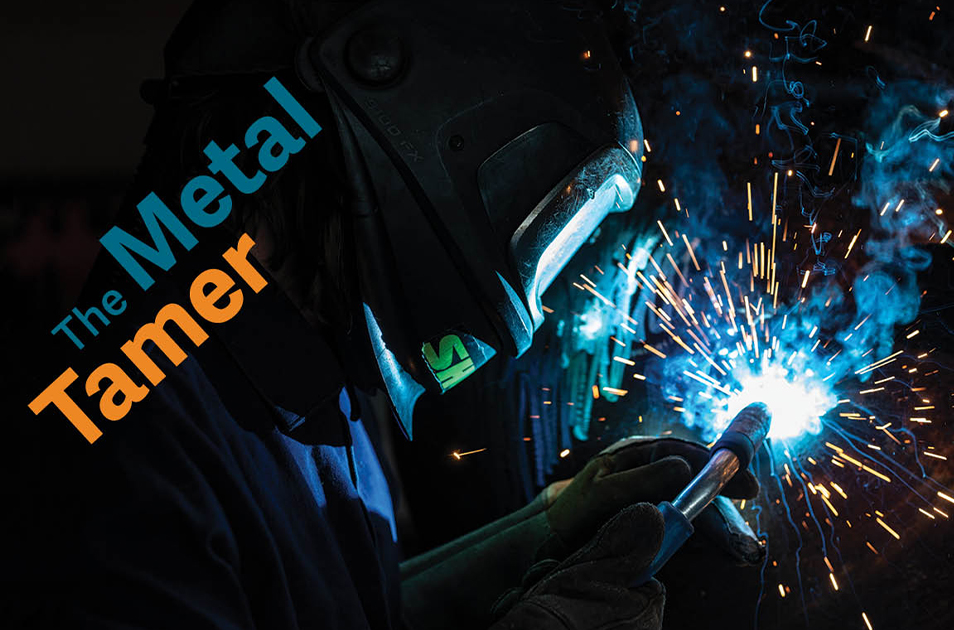Contact us
401 W. Kennedy Blvd.
Tampa, FL 33606-13490
(813) 253-3333
Artist Ryan McCallister ’10 uses steel, fire and electricity to create larger-than-life sculptures that make you wonder: “How did he do that?”

Ryan McCallister ’10 creates most sculptures using Metal Inert Gas (MIG) arc welding.

Ryan McCallister ’10 in front of a series of trail markers he created that were commissioned by the Frank Lloyd Wright Foundation for Taliesin West, which was Wright’s winter home in the desert foothills of the McDowell Mountains in Scottsdale, AZ
"When you tell people you’re an artist, nobody takes you seriously or treats it like it’s a real career. But I can confidently say I am an artist now.” – Ryan McCallister ’10

Left to right: Jormungandr’s head, which is one part of a four-part sculpture and made from steel and Arizona river rock; KUR, the 4-foot-5-inch underworld dragon is made from steel, stone, blown glass (eyes) and stained glass (wings); The Griffin is a 5-foot sculpture made from steel, Arizona river rock and blown glass (eyes).




Top to bottom: Ryan McCallister ’10; Atlas was made using a computer numerical control (CNC) router, which is a computer-controlled cutting machine; The Majestic Moose is made of nickel-plated steel and filled with Mexican polished beach rock; a steel and stained-glass trail marker made for Taliesin West.
More UT News